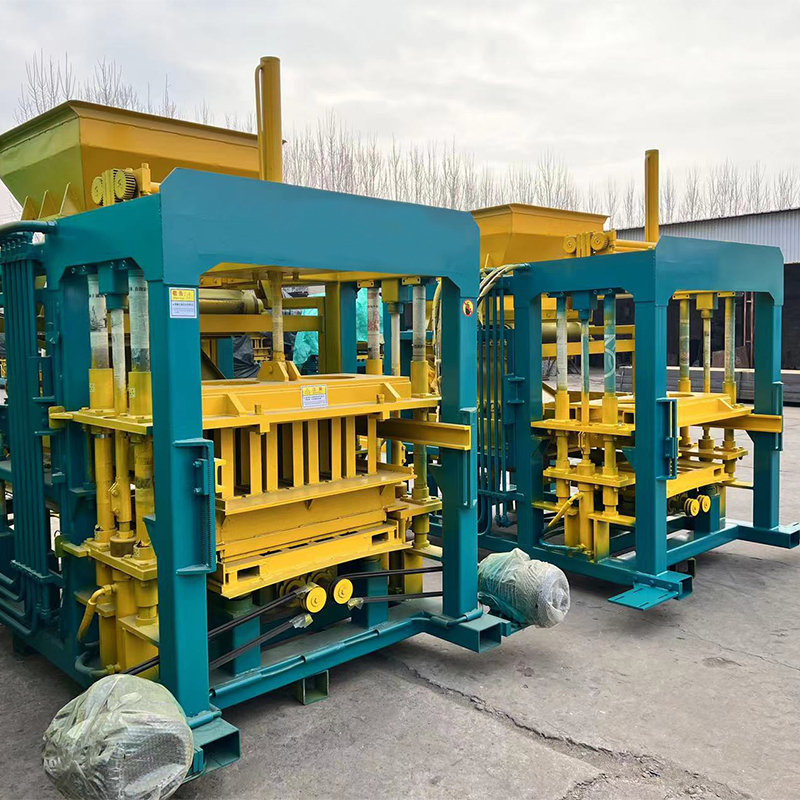
Image source :Aiweiblockmachine
Environmental Considerations for brick making machine
Introduction:
Brick making has been an essential practice for centuries, providing building materials for various construction projects. However, the traditional brick-making process often involves high energy consumption, resource depletion, and environmental pollution. In recent years, there has been a growing emphasis on sustainable practices in the construction industry, prompting the development of environmentally-friendly brick making machines. This article explores the environmental considerations associated with brick making machines, highlighting the shift towards sustainable alternatives and innovative approaches..
The Impact of Traditional Brick Making:
Energy Consumption: Traditional brick-making methods typically involve high energy consumption due to the firing process required to harden the bricks. This results in significant greenhouse gas emissions, contributing to climate change. 1.2 Resource Depletion: The extraction of clay or other materials used in brick making can lead to land degradation and ecosystem disruption. Additionally, traditional methods often require large quantities of water, exacerbating water scarcity issues. 1.3 Air Pollution: The burning of bricks in traditional kilns releases harmful pollutants into the atmosphere, including particulate matter, sulfur dioxide, and nitrogen oxides, posing health risks and contributing to air pollution.
Sustainable Brick Making Machines:
2.1 Eco-Friendly Materials: One approach to environmentally-friendly brick making involves the utilization of alternative materials, such as fly ash, a byproduct of coal-fired power plants, or recycled aggregates. These materials can reduce the demand for clay and limit the environmental impact of brick production.
2.2 Energy Efficiency: Modern brick making machines are designed to be energy-efficient, utilizing advanced technologies to minimize power consumption during the production process. This includes the use of efficient motors, insulation, and optimized operating procedures.
2.3 Waste Reduction: Sustainable brick making machines incorporate features that help reduce waste generation. For instance, automated systems ensure precise material dosing and minimize overproduction. Additionally, recycling systems can be integrated to reuse excess materials or bricks that do not meet quality standards.
2.4 Water Management: Water scarcity is a global concern, and brick making machines can contribute to sustainable water management by implementing water recycling and conservation measures. Closed-loop systems can be employed to minimize water usage and reduce the environmental impact associated with traditional brick-making methods.
Innovations in Brick Making Machines:
3.1 Fly Ash Brick Making Machines: Fly ash, a byproduct of coal combustion, can be used as a substitute for clay in brick making. Fly ash brick making machines efficiently utilize this material, reducing the environmental impact of both fly ash disposal and clay extraction.
3.2 Solar-Powered Brick Making Machines: Solar energy offers a sustainable power source for brick making machines. Solar-powered machines reduce reliance on grid electricity, minimizing carbon emissions and operating costs.
3.3 Automation and Precision: Advanced brick making machines incorporate automation and precision control systems, ensuring optimal use of resources and minimizing errors. This results in higher-quality bricks while reducing material wastage and energy consumption.
Environmental Certifications and Standards:
4.1 LEED Certification: The Leadership in Energy and Environmental Design (LEED) certification promotes sustainable building practices, including the use of environmentally-friendly construction materials. Brick making machines that produce bricks meeting LEED standards contribute to sustainable construction projects.
4.2 Green Building Codes: Governments and regulatory bodies are implementing green building codes that prioritize sustainable practices. Brick making machines that adhere to these codes help builders meet environmental regulations and contribute to a more sustainable construction industry..
Conclusion:
Environmental considerations have become increasingly important in the brick making industry, leading to the development of sustainable brick making machines. These machines utilize eco-friendly materials, optimize energy consumption, minimize waste generation, and incorporate innovative technologies. By adopting these environmentally-friendly practices, the brick making industry can significantly reduce its ecological footprint and contribute to a more sustainable future in construction. It is crucial for manufacturers, builders, and policymakers to recognize the potential of these sustainable alternatives and promote their widespread adoption.
Eco-friendly Materials for Brick Making:
One key aspect of promoting sustainability in brick production is the use of eco-friendly materials. Traditional clay bricks can be replaced or supplemented with alternative materials that have lower environmental impacts. For instance, fly ash, a byproduct of coal combustion, can be used as a substitute for clay in brick production. Fly ash bricks not only reduce the demand for clay but also prevent the accumulation of fly ash in landfills, providing a sustainable solution.
Energy-efficient Technologies:
Brick making machines have evolved significantly, incorporating energy-efficient technologies that help reduce energy consumption and greenhouse gas emissions. Modern machines utilize electric motors instead of diesel engines, offering greater energy efficiency and minimizing carbon emissions. Additionally, some machines incorporate heat recovery systems that capture and reuse the waste heat generated during the brick manufacturing process, further enhancing energy efficiency.
Waste Reduction and Recycling:
Reducing waste generation and promoting recycling are crucial elements of sustainable brick production. Brick making machines can be designed to incorporate mechanisms that enable the recycling of waste materials generated during the manufacturing process. For example, excess clay or crushed bricks can be recycled and used as raw materials for new bricks, minimizing waste and conserving resources.
Water Conservation:
Water is a valuable resource, and its conservation is essential in brick production. Brick making machines can be equipped with water recycling systems that capture and treat wastewater generated during the manufacturing process. These systems enable the reuse of water, reducing the overall water consumption and minimizing the strain on local water sources
Conclusion:
The environmental considerations for brick making machines are essential in the pursuit of a sustainable future. By adopting eco-friendly materials, incorporating energy-efficient technologies, reducing waste generation, conserving water, controlling emissions, and adhering to certification and standards, the brick manufacturing industry can significantly reduce its environmental footprint. The development and utilization of environmentally friendly brick making machines are crucial steps towards building a sustainable and resilient construction sector that balances the needs of development with the preservation of our planet’s resources.
